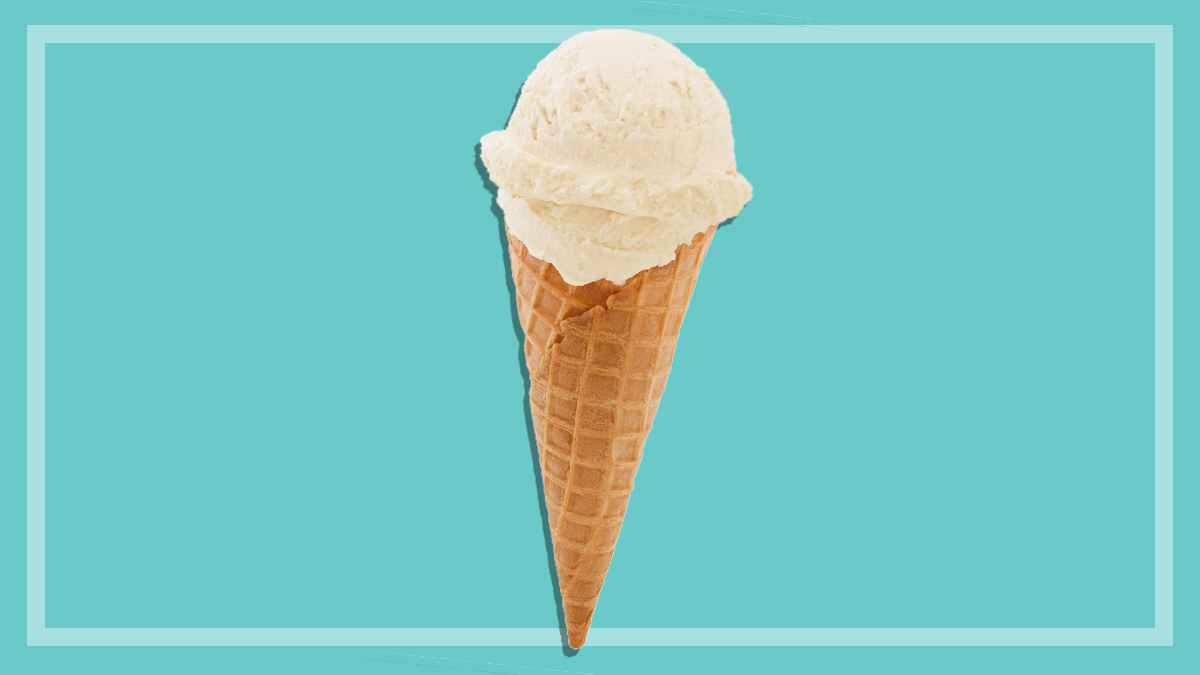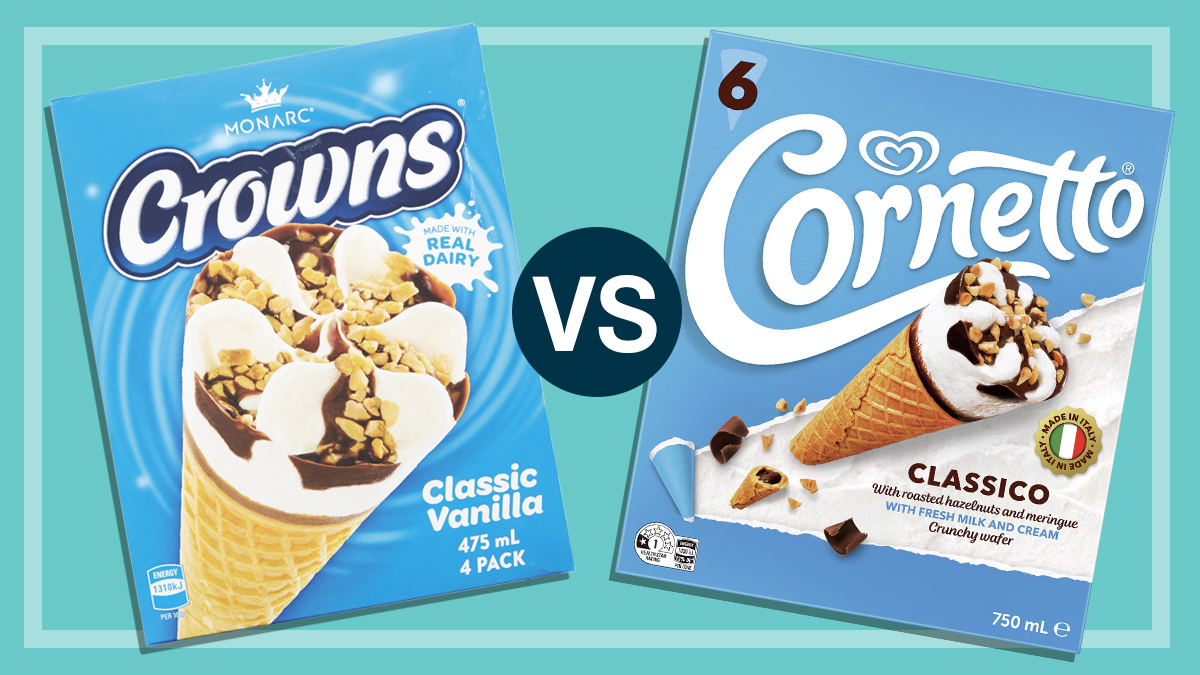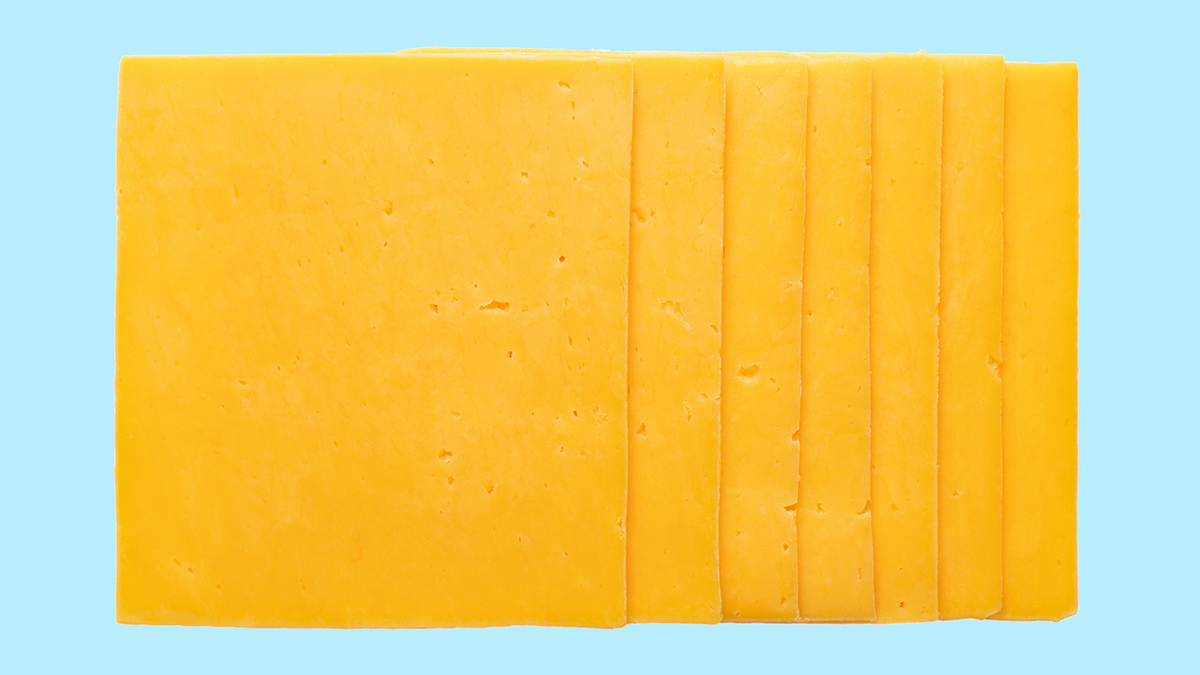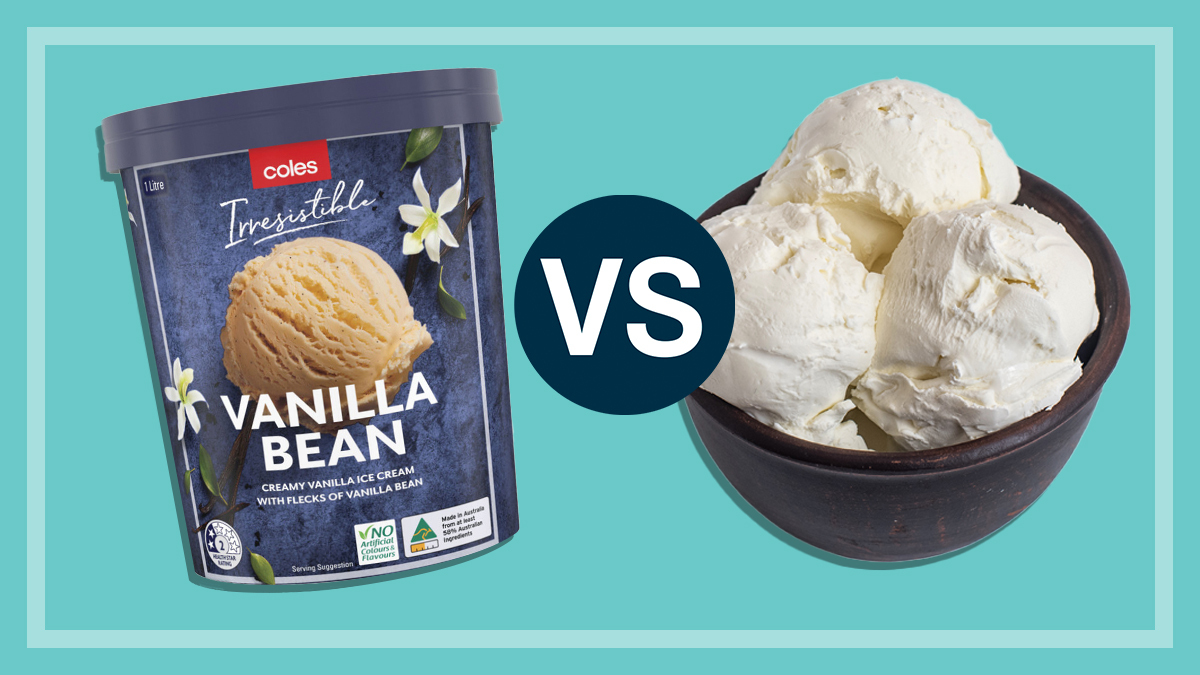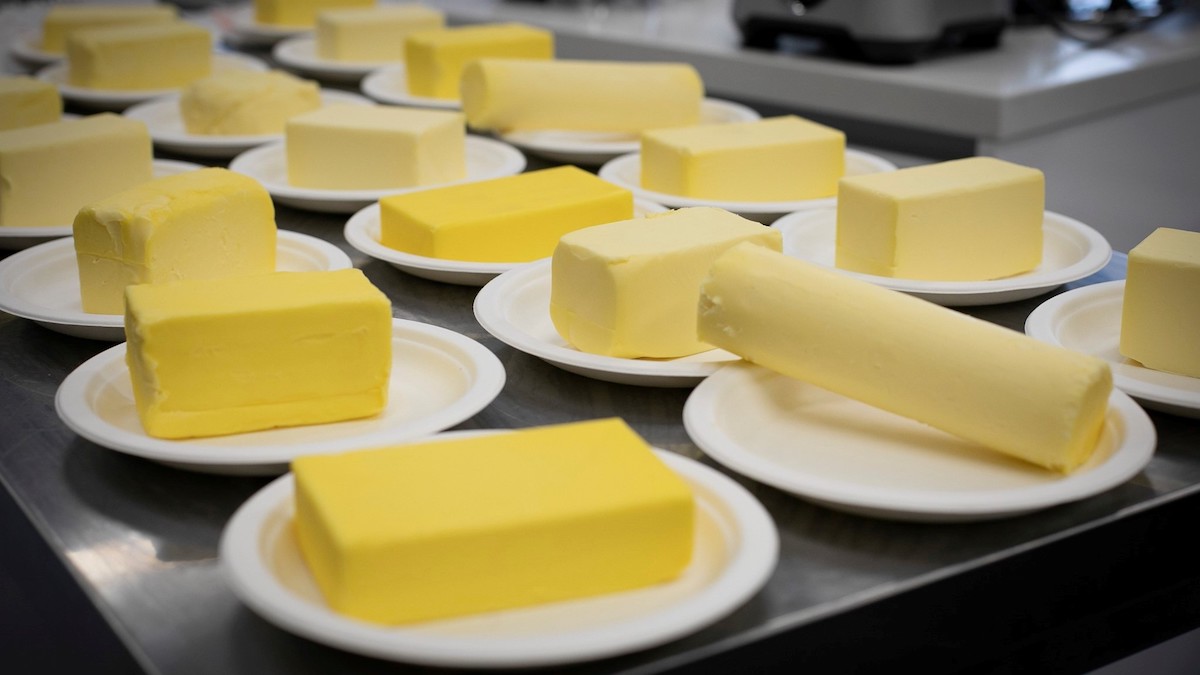Get our independent lab tests, expert reviews and honest advice.
Coles and Aldi top vanilla ice cream taste tests
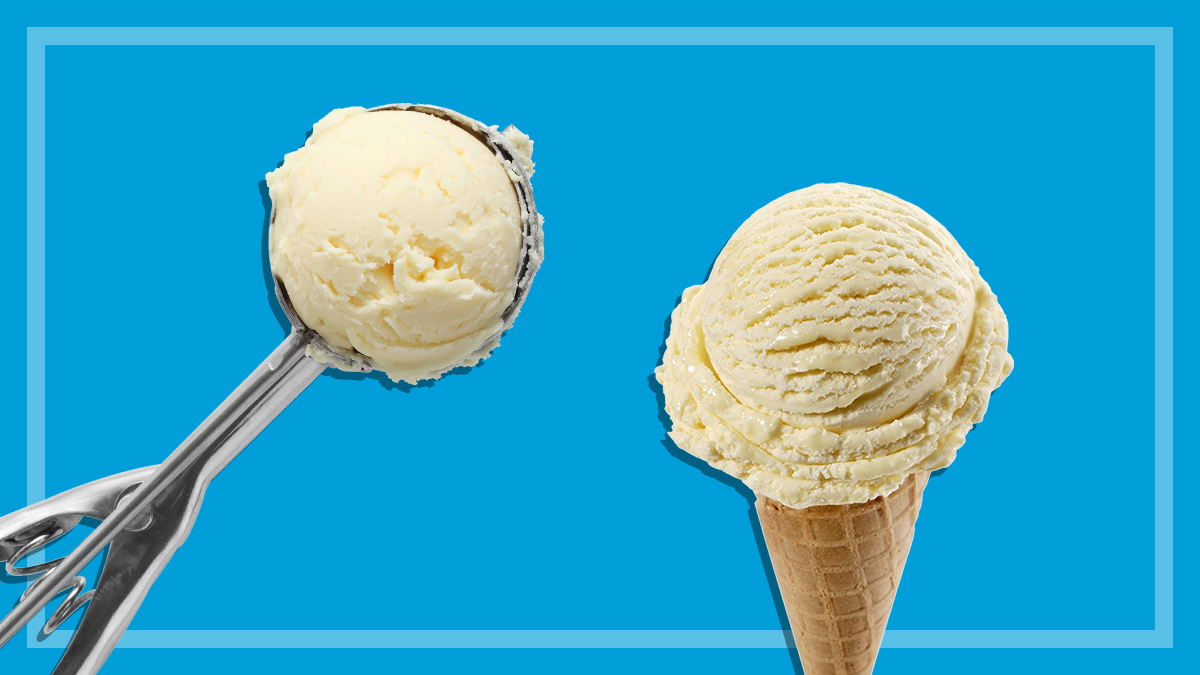
Vanilla ice cream is a classic treat and a staple in the freezers of many. Loved for its smooth, creamy flavour, it can be enjoyed on its own or as an accompaniment to many desserts.
On this page:
- Top ice creams in our test
- Cheapest ice creams
- Most expensive ice creams
- What's the difference between ice cream and gelato?
- What makes a good ice cream?
- Additives in ice cream
- Does diet ice cream taste good?
- How we test ice cream
But with so many ice cream brands and styles now on offer at the supermarket, how do you know which product to choose? It’s no longer as simple as deciding between vanilla or chocolate.
For starters, what’s the difference between ice cream and gelato? Why do some ice creams contain additives? Is there a taste trade-off when choosing diet ice cream?
To help answer these questions and more, we reviewed and taste tested vanilla ice creams available in Australian supermarkets, from brands including Bulla, Connoisseur, Haagen-Dazs, Peters, Streets and more.
Top ice creams in our test
Of the 25 vanilla ice creams we included in our expert panel blind taste test, four received a CHOICE Expert Rating of 80% or more, earning them recommended status.
Three of these were home-brand products from Coles, Woolworths and Aldi, with these lower-cost options beating some of the more premium brands like Connoisseur and Haagen-Dazs.
Norco products were hit and miss. The Cape Byron Ultimate Vanilla impressed our judges and achieved recommended status, but the same brand’s Classic Vanilla option was among the lowest scorers.
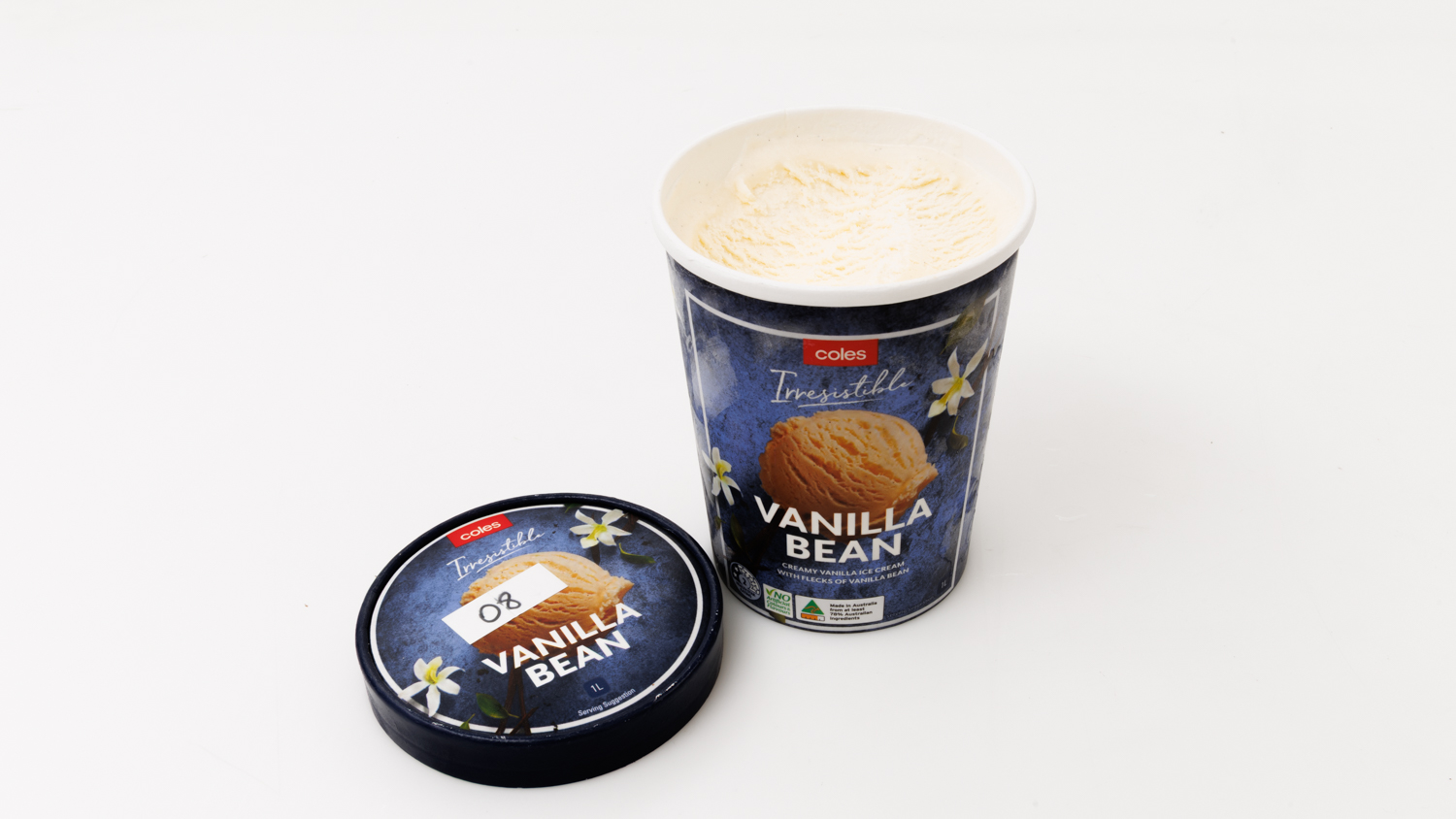
Coles Irresistible Vanilla Bean
- CHOICE Expert Rating: 94% (Recommended)
- Price per 100mL: $0.65
- Experts say: “Good quality ice cream”, “creamy texture, smooth”, “pleasant vanilla aroma”, “good appearance with vanilla seeds evident”, “good creaminess”.
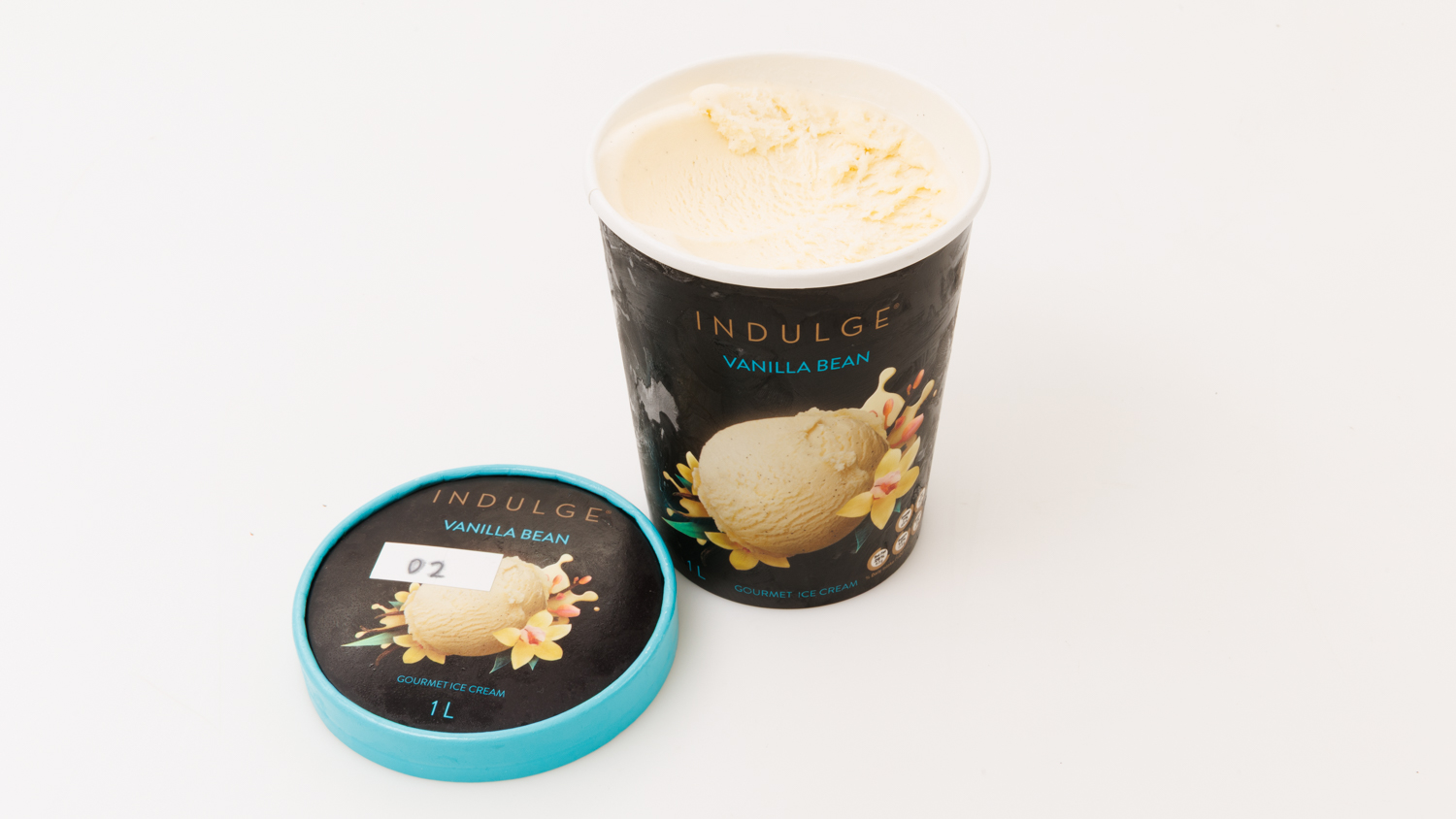
Aldi Indulge Vanilla Bean Gourmet Ice Cream
- CHOICE Expert Rating: 89% (Recommended)
- Price per 100mL: $0.60
- Experts say: “Pleasant mild vanilla aroma, vanilla seeds evident, good vanilla flavour”, “a very pleasant ice cream”, “creamy nice mouthfeel”, “great balance in flavour and fat”.
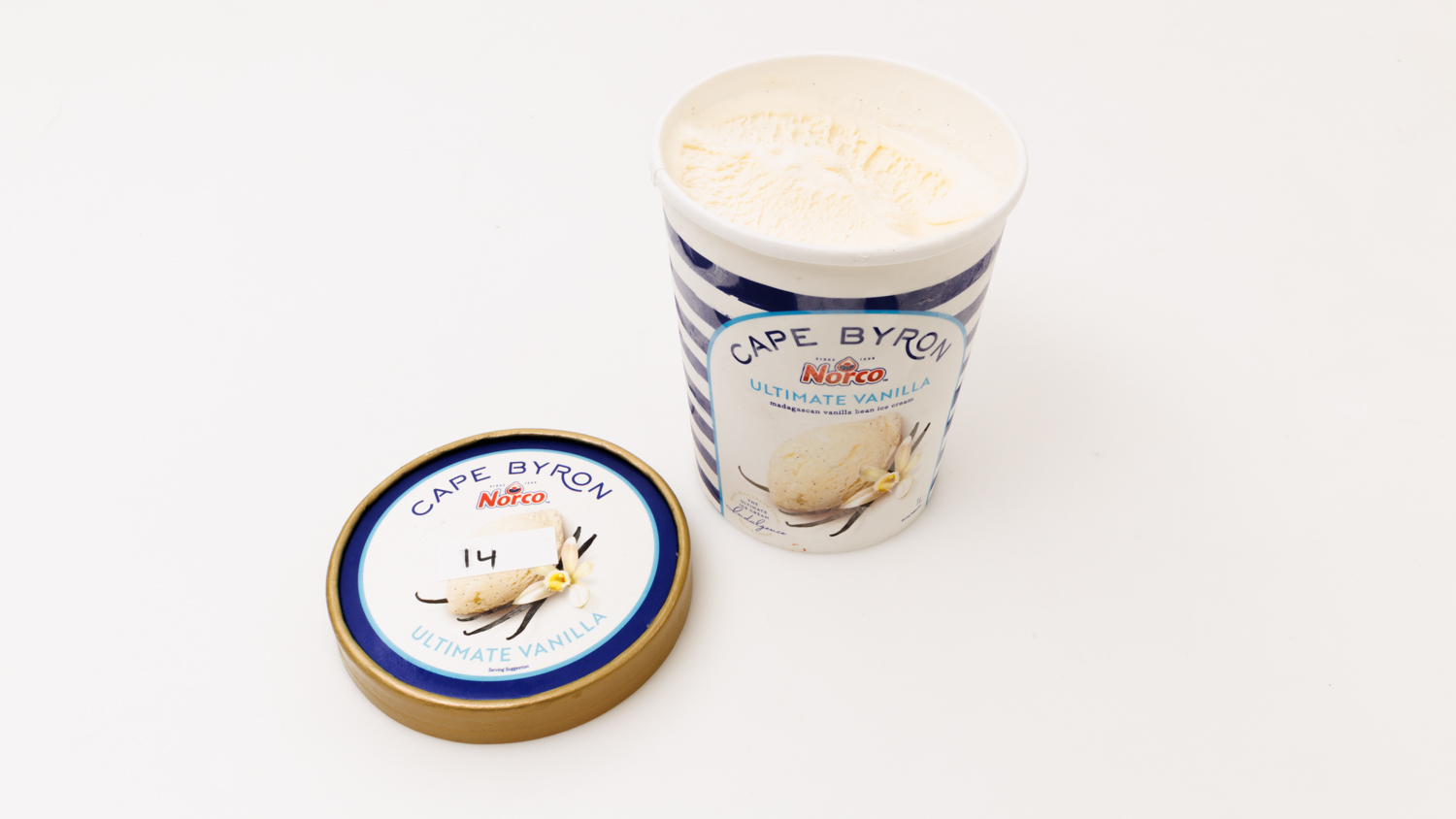
Norco Cape Byron Ultimate Vanilla
- CHOICE Expert Rating: 85% (Recommended)
- Price per 100mL: $1.00
- Experts say: “Strong vanilla aroma”, “nice balance of vanilla flavour and sweetness level”, “creamy mouthfeel”, “very nice standard typical vanilla ice cream”, “smooth, no iciness in texture”.
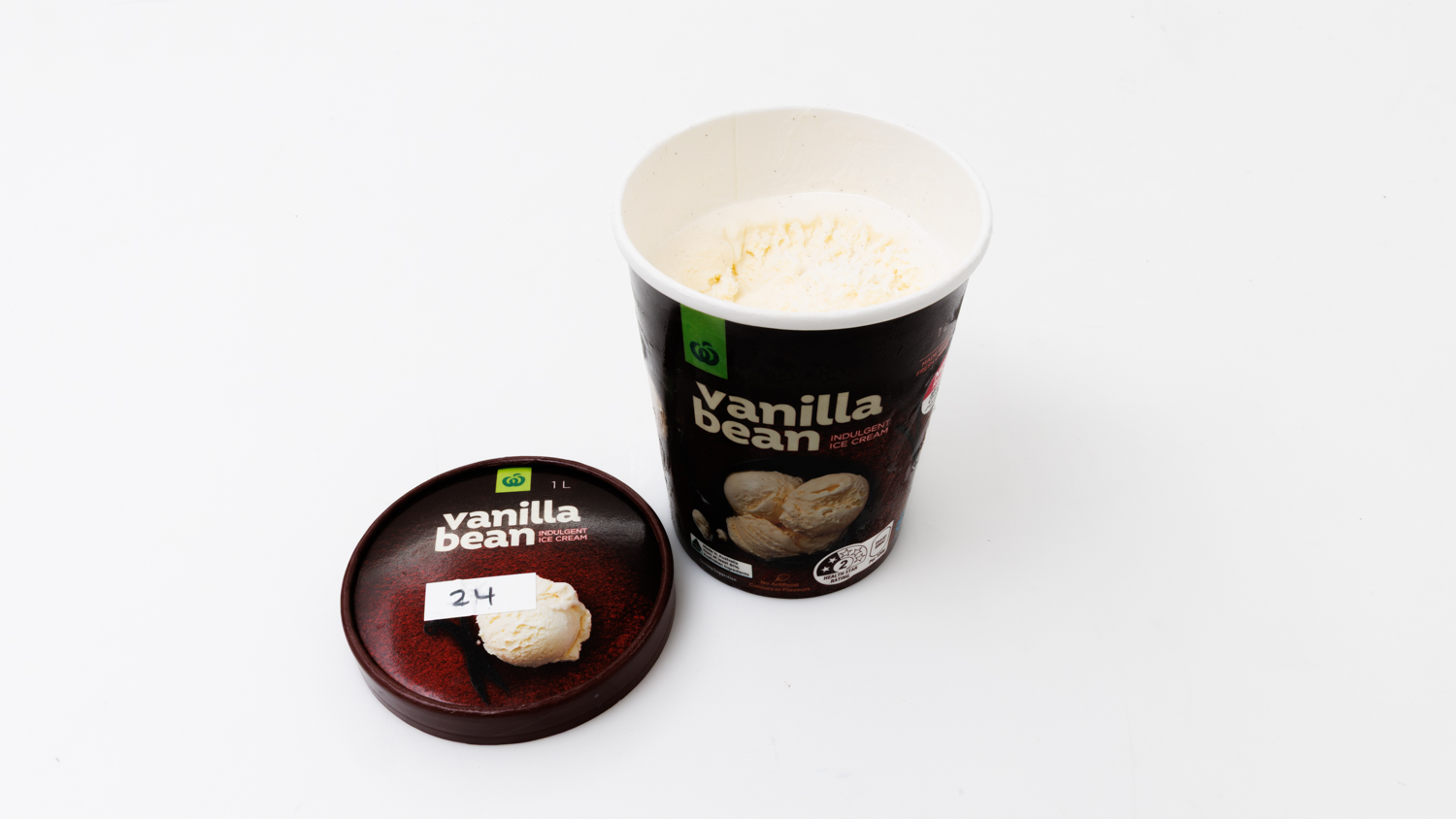
Woolworths Vanilla Bean Indulgent Ice Cream
- CHOICE Expert Rating: 81% (Recommended)
- Price per 100mL: $0.65
- Experts say: “Nice balanced vanilla flavour and sweetness level”, “pleasant but mild vanilla aroma and mild vanilla flavour”, “good texture with vanilla bean seeds evident”, “balanced flavour”.
Cheapest ice creams
The three cheapest ice creams were also among the lowest scoring according to our experts.
Aldi Milfina Vanilla
- CHOICE Expert Rating: 47%
- Price per 100mL: $0.17
- Experts say: “Mild vanilla aroma”, “very icy texture, coarse, watery, not creamy”, “too sweet – unbalanced”, “artificial”, “little creaminess in appearance or mouthfeel”.
Coles Simply Vanilla
- CHOICE Expert Rating: 47%
- Price per 100mL: $0.23
- Experts say: “Icy texture with very little creaminess or fat”, “melts quickly with mainly sweet taste and aftertaste”, “very soft texture and very icy”, “taste is not good”.
Woolworths Vanilla
- CHOICE Expert Rating: 43%
- Price per 100mL: $0.23
- Experts say: “Texture is coarse”, “taste is lacking”, “not creamy at all”, “little vanilla aroma or flavour and flavour disappears from the palate quickly”.
Most expensive ice creams
If you think spending more means a better product, think again. The most expensive products came from the brands Bulla, Connoisseur, Elato, Haagen-Dazs, Pana Organic and Sara Lee, but none of these pricey products received scores to brag about.
- Haagen-Dazs Vanilla: $2.95 per 100mL
- Elato Triple Vanilla: $2.63 per 100mL
- Pana Organic Vanilla Bean Frozen Dessert: $1.37 per 100mL
- Bulla Murray St Ice Creamery Vanilla Bean: $1.20 per 100mL
- Connoisseur Classic Vanilla: $1.20 per 100mL
- Sara Lee Creamy French Vanilla Ice Cream: $1.20 per 100mL
Their taste test results were mediocre at best, ranging from 46% for Pana Organic, to 69% for Elato and Bulla’s Murray St.
The Haagen-Dazs Vanilla cost a staggering $2.95 per 100mL, but only scored 54% for taste. This was way below the top products, which all score over 80% and cost as little as 60 cents per 100mL. It just goes to prove that you can’t buy flavour.
Organic, but tastes like coconut
If you’re looking for an organic product or one that’s suitable for vegans, the Pana Organic product ticks these boxes – but buyer beware, it tastes like coconut, not vanilla.
When choosing which products to test, our criteria was any supermarket ice cream that’s labelled as “vanilla” and the Pana Organic product is called Vanilla Bean. But, as one expert said, “the coconut presence overbears on the vanilla”, and another observed, “this would be good if sold as a coconut ice cream; there’s no vanilla aroma, only coconut, even though vanilla seeds are evident”.
Cheapest vs Most Expensive Vanilla Ice Creams
Cheapest
Aldi Milfina Vanilla
Price: $0.17 per 100mL
CHOICE Expert Rating: 47%
Coles Simply Vanilla
Price: $0.23 per 100mL
CHOICE Expert Rating: 47%
Woolworths Vanilla
Price: $0.23 per 100mL
CHOICE Expert Rating: 43%
Most Expensive
Haagen-Dazs Vanilla
Price: $2.95 per 100mL
CHOICE Expert Rating: 47%
Elato Triple Vanilla
Price: $2.63 per 100mL
CHOICE Expert Rating: 69%
Pana Organic Vanilla Bean Frozen Dessert
Price: $1.37 per 100mL
CHOICE Expert Rating: 46%
Bulla Murray St Ice Creamery Vanilla Bean
Price: $1.20 per 100mL
CHOICE Expert Rating: 69%
Connoisseur Classic Vanilla
Price: $1.20 per 100mL
CHOICE Expert Rating: 64%
Sara Lee Creamy French Vanilla Ice Cream
Price: $1.20 per 100mL
CHOICE Expert Rating: 61%
What’s the difference between ice cream and gelato?
The words ice cream and gelato are often used interchangeably, but they are two different products. The main difference is that ice cream is regulated for its milk fat content.
Ice cream
To be sold as ice cream, a product needs to meet certain requirements for milk fat and food solids.
Food Standards Australia defines ice cream as “a sweet frozen food that is made from cream or milk products or both and other foods, and is generally aerated”. Crucially, it must contain at least 10% milk fat and 168g/L of food solids.
To be labelled as “reduced fat ice cream” it must contain at least 25% less fat than standard ice cream, and low fat versions must contain no more than 3% fat.
There are plenty of products in the freezer aisle that look like ice cream products but don’t meet these requirements. If you check the nutrition panel, they may be described as something like “vanilla flavoured frozen dairy dessert”.
Gelato
Gelato is the Italian word for ice cream, but there’s no standard definition for gelato in Australia.
Gelato can be either milk-based or fruit-based, and doesn’t necessarily contain dairy products. According to gelato producers, gelato is generally lower in fat – closer to 5%, compared with 10% or higher for ice cream – and churned less than ice cream.
When less air is incorporated into the mixture, this results in a denser consistency with a colder, fresher eating sensation – a common attribute of premium-tier ice creams, as well as gelato.
Sorbet
Sorbet is a French word that describes a frozen mixture of sweetened water and fruit juice or purée. Fruit-based, dairy-free gelato is sometimes referred to as sorbet. We didn’t include sorbet in our taste test.
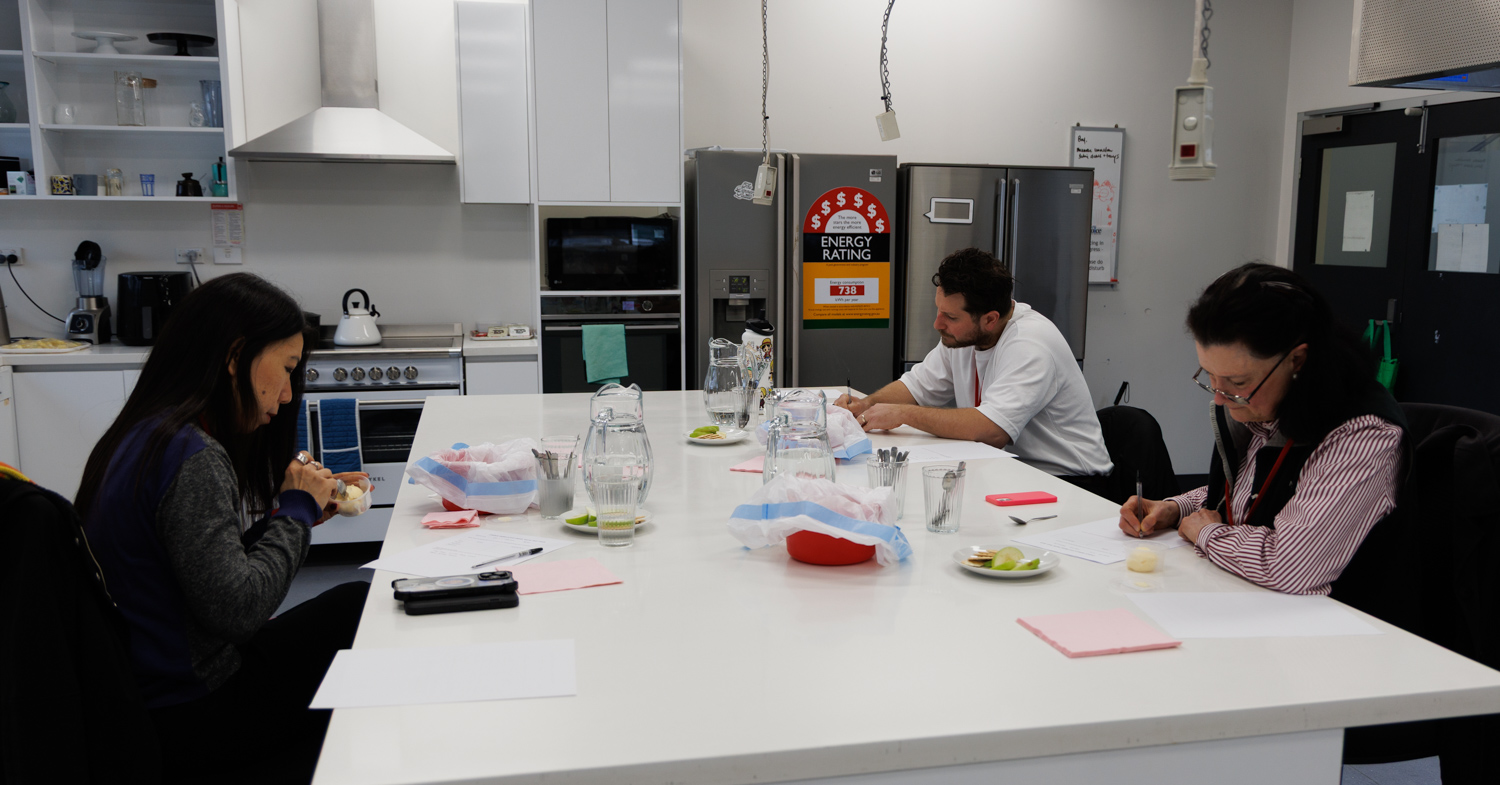
What makes a good ice cream?
Ice cream is more than just frozen cream and milk, which would simply be hard and unpalatable.
Sugar is added to reduce the freezing point of cream – and of course give it the sweetness essential to a dessert! And then the mix is churned to introduce air.
From there, those components interact to create one of the world’s most loved frozen treats. Here’s how they work together:
1. Ice crystals
These are made from the water in the cream, and their size plays a big role in whether your ice cream feels silky smooth or a bit grainy.
2. Concentrated cream
This is what’s left of the cream after the crystallisation of its water. It contains the dissolved sugar, a bit of water (that stays liquid because of all the sugar), milk fats, and milk proteins. This concentration acts as the glue, holding those ice crystals together, making your ice cream solid.
3. Air
While your ice cream is getting all churned up, air particles sneak in. They weaken the bond between the cream and ice crystals, which makes the ice cream softer and easier to scoop. And they increase the volume of the ice cream, sometimes up to a half air and half ice cream mix.
The key to making a good ice cream is the right balance between these ice crystals, concentrated cream and the air. The resulting product should be creamy, smooth, firm and just a little bit chewy. And it should have a milk fat percentage between 10 and 20%.
In vanilla-flavoured ice cream, the strength of flavour is very important too.
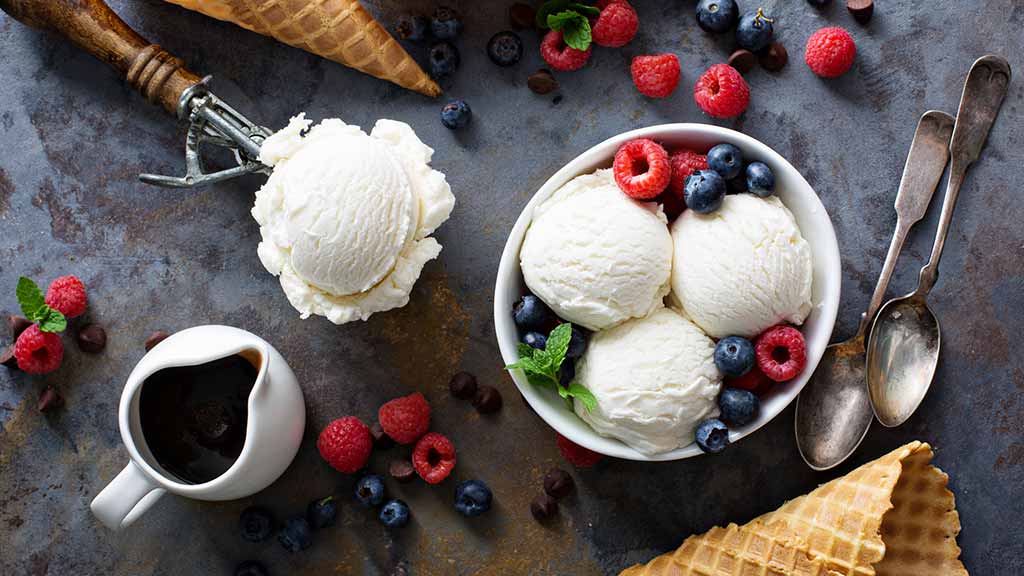
Additives in ice cream
Read the ingredients list and you’ll see that ice cream sometimes contains a number of different additives, most commonly emulsifiers, stabilisers and thickeners. The main reason they’re there is to help retain the ice cream’s smooth and creamy texture.
Emulsifiers are used in many foods to help prevent fat and water from separating into layers, while stabilisers and thickeners (such as vegetable gums) perform the similar functions of increasing stability, increasing viscosity (thickness) to a desired consistency, and maintaining the uniform dispersion of substances in solid and semi-solid foods.
For ice cream specifically, the emulsifiers help to promote the formation of a whipped fat structure in the product during freezing, which gives good melting resistance when being eaten. The emulsifiers also promote a longer shelf life and creaminess in the ice cream. Stabilisers and thickeners give a rich, creamy mouthfeel.
Emulsifiers, stabilisers and thickeners are there to help retain an ice cream’s smooth and creamy texture
When a freezer goes through its cycles – warming up and cooling down again – small ice crystals present in the product can eventually grow into larger ones over time, typically resulting in a coarse texture and iciness. The stabilisers and thickeners play a useful role to limit the increasing size of ice crystals during storage.
Where traditionally ice cream producers would include eggs in their recipe to help perform these functions, there are a few reasons why they may choose to use additives as an alternative.
Additives are more robust and easier to store and transport than eggs. Eggs are also a common allergen, so removing them from the recipe makes the product more widely accessible. Crucially, additives are more consistent in price and availability than eggs and are significantly more cost-effective.
Colour
The colour of ice cream is important; it’s the first thing we notice when we look at it.
Most of the ice creams included in this test contain added colour. The additives are usually beta carotene (also listed as 160a), lutein (160b) or annatto (161b). These all lend a yellow/orange colour to food. These colours are used to mimic the colour of egg yolk, which is traditionally used to make ice cream. These additives have been approved by the Australian Food Standards (FSANZ) as safe to use in foods.
Three of the products we tested contained egg yolk rather than added colour: Haagen-Dazs Vanilla, Elato Triple Vanilla and Sara Lee Creamy French Vanilla Ice Cream.
Beef-derived gelatine
One of the ice creams we tested contained gelatin. Gelatin is added to many foods and comes from the skin, bones and tendons of animals. It’s used to thicken or provide a desirable texture in the ice cream.
If you’re a vegetarian then you’ll want to avoid the Golden North Vanilla Ice Cream.
Other ice creams in this test contained seaweed-derived gums such as carrageenan, which can be consumed in vegetarian diets.
Does diet ice cream taste good?
Ice cream is an indulgence and you’d expect there to be cream, milk and sugar in abundance – with their associated fat, sugar and kilojoules.
Low-kilojoule or low-sugar ice cream is an option, but when you remove these goodies are you also removing the deliciousness?
Of the 18 products we tested that stated their milk fat percentage, six were below 10%.
But while there may be a lot of options for people looking for lower fat ice cream, unfortunately most of those products languish in the bottom half of the results table.
The Aldi Monarc Silver Scoop Creamy Vanilla Flavoured has a milk fat percentage of 6% and scored 72% for taste, which we consider to be a good result
One exception was the Aldi Monarc Silver Scoop Creamy Vanilla Flavoured, which has a milk fat percentage of 6% and scored 72% for taste, which we consider to be a good result.
On average, the diet products (categorised as those containing less than 3g of fat per 100g) contained an average of 629 kilojoules per 100g, compared with the average 842 kilojoules per 100g in the regular ice cream products we tested.
Per serve, that’s not a big difference. So if you’re trying to cut down on kilojoules, you’ll still need to be careful to not overdo it.
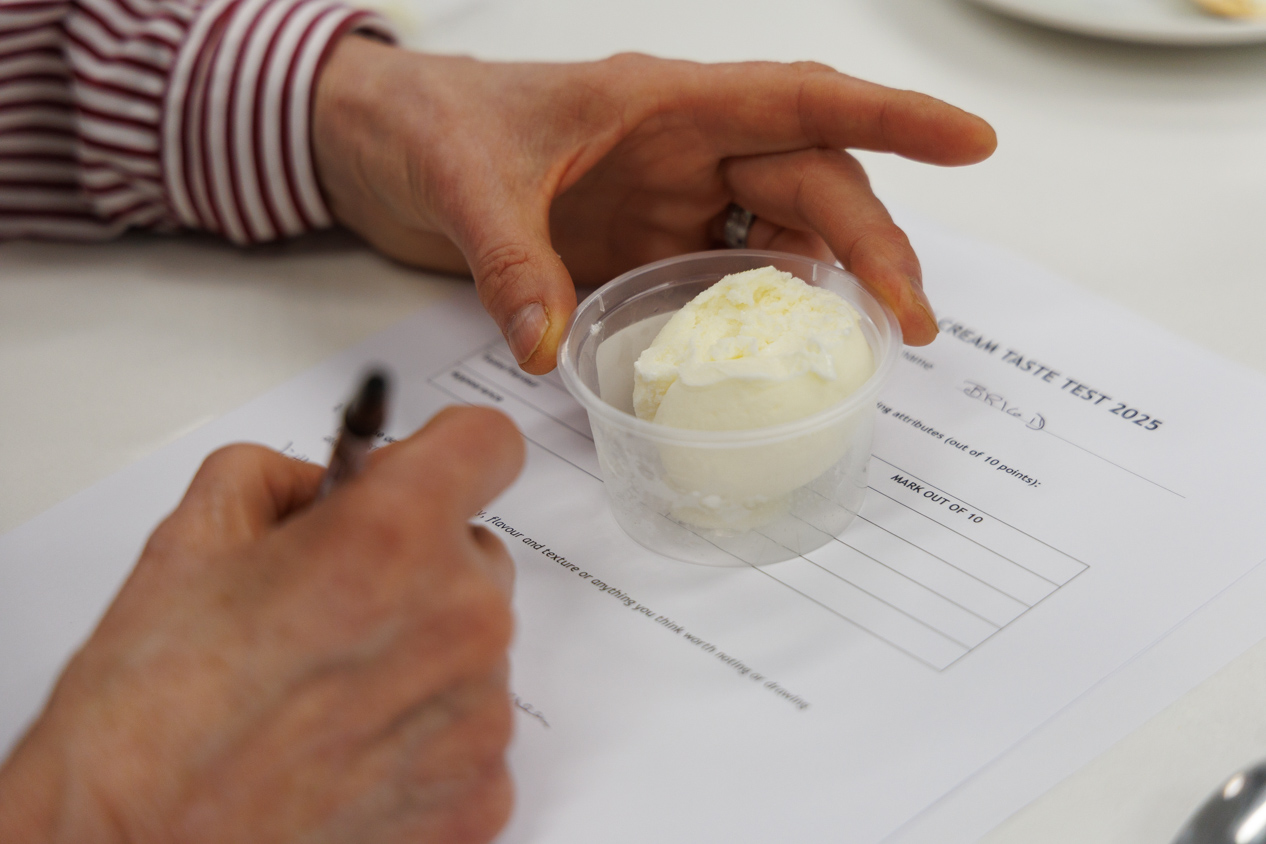
How we test ice cream
Products
We included products labelled as vanilla ice cream, or those that presented themselves as vanilla ice cream through the imagery or wording used on the packaging (see definition of ice cream above), that are available nationally through at least one of the major supermarket chains.
Tasting
Our experts tasted the ice cream samples blind (without knowing the brands) in a randomised order, and rated the ice creams on appearance, aroma, flavour and texture.
Scores
Experts independently judged all ice creams, scoring each sample for flavour and aroma, texture and appearance. The CHOICE Expert Rating is made up of the taste test result which consists of:
- flavour 40%
- texture 30%
- appearance 20%
- aroma 10%.
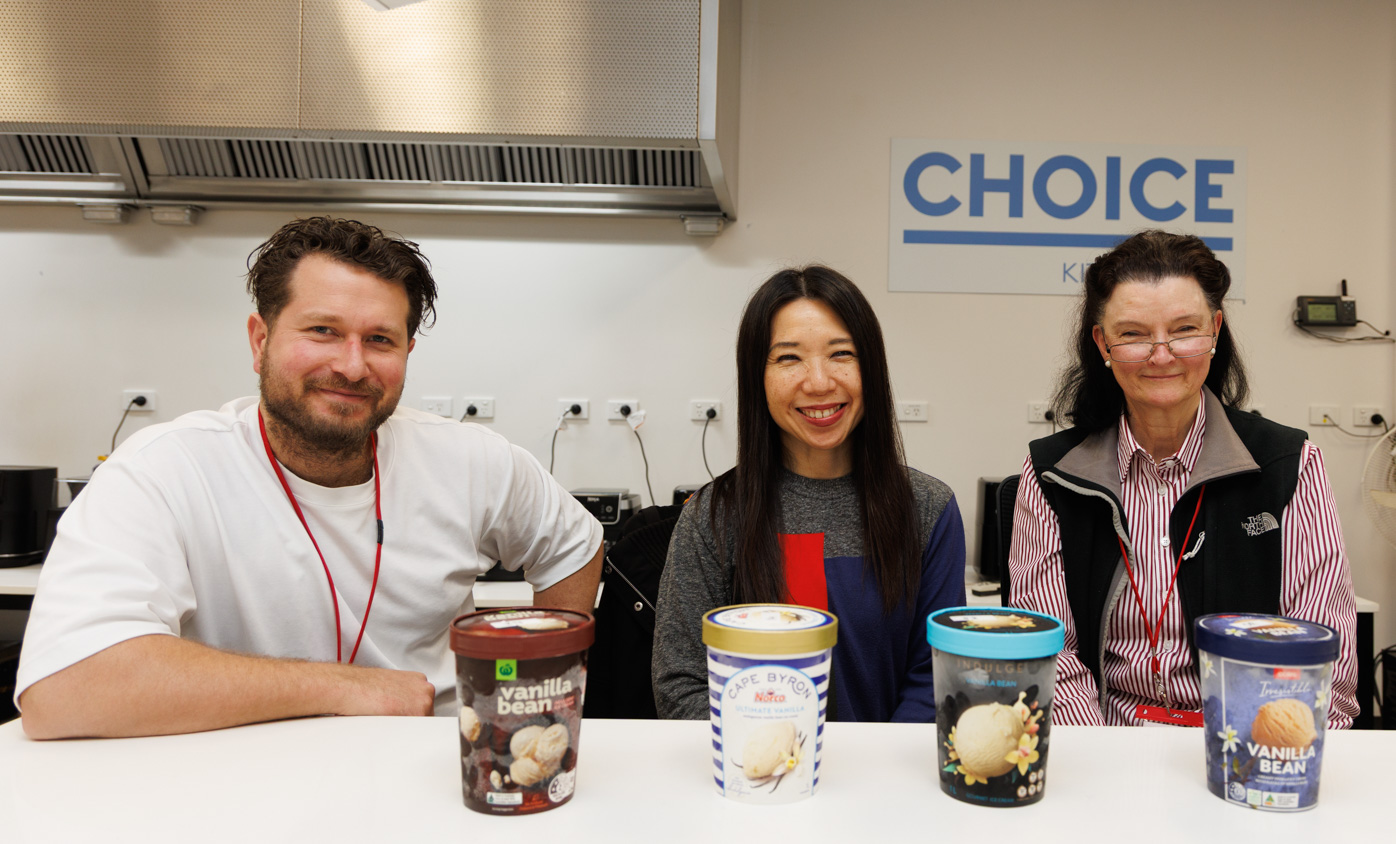
Meet our expert taste testers
Vincent Piccolo is an Artisan Gelato Maker and the creative force behind his family’s business, Art of Gelato. He has spent his life mastering the multigenerational recipes and techniques of his craft. Today, Vincent creates bespoke gelato products for Sydney’s most recognisable venues and has been featured by the Powerhouse Museum in its “Powerhouse Food: Producers” series.
Petra Sugiarto has an academic background in food technology and microbiology and has been working in the food industry for more than 20 years, in particular the dairy industry in various applications including yoghurt, cheese, ice cream/gelato, dairy desserts. For the past 14 years she’s been on the judging panels for the DIAA and Sydney Royal Cheese & Dairy Produce competitions and for the AGDA.
Brigid Treloar has been a freelance food consultant for over 30 years. The author of eight cookbooks, and co-author of three others, she also contributes to newspapers and magazines, reviews restaurants and judges cookery and recipe competitions. Brigid has presented specialist cooking classes around Australia and overseas, and often appears on TV and radio. She’s a lecturer at Le Cordon Bleu, consultant with Zest Waterfront Venues, and advises many of Australia’s food companies on product and recipe development. Brigid is Chair of Judges for Sydney Royal Fine Food Speciality Products (which includes products like jams, herbs, teas and chocolate) and is a judge for Professional Bakery, Aquaculture, Pasta, Olive Oil, Dairy Competitions and Sydney Perishable and Non-Perishable foods.

